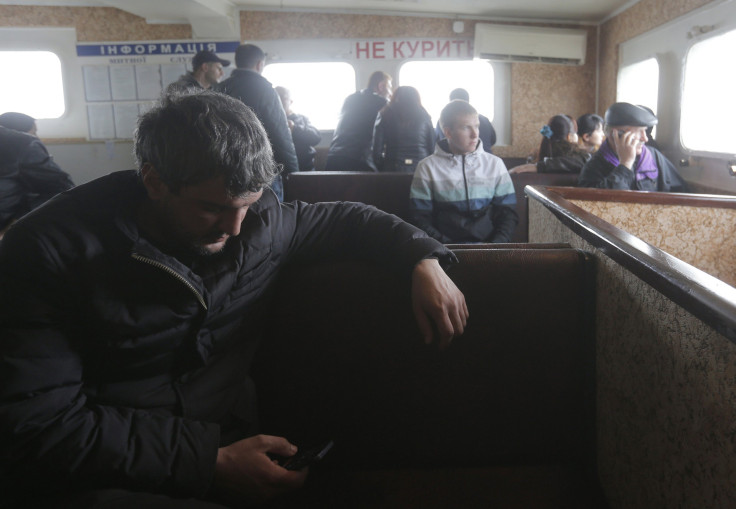Moscow To Build Bridge From Russian Mainland To Crimea Across The Kerch Strait

Russia is pressing ahead with the construction of a bridge from the mainland to the Crimean peninsula, which it annexed from Ukraine in March 2014, according to a report by the pro-Ukrainian news site UNIAN on Tuesday. The bridge, which will consist of parallel road and rail sections, and connect Crimea with Russia's Taman peninsula across the Strait of Kerch, will further underline Russia’s claim to the contested region.
The $3 billion contract for the 3-mile bridge previously was awarded to Russian President Vladimir Putin’s friend and judo partner Arkady Rotenberg, according to a BBC report from January. Crimea is currently accessible from the Russian mainland by sea and air only, as land routes along Ukraine’s Sea of Azov coast have been disrupted by the conflict in eastern Ukraine.
Meanwhile, preparations for the bridge are underway as temporary infrastructure is created, with construction camps and auxiliary roads being built on both sides of the strait.
According to the Russian information agency RBC, "the traffic capacity of the line is up to 40,000 cars per day” while the railway has two lines that will allow passenger trains to travel on the bridge at 75 miles per hour and trucks to travel on the road at 50 mph.
"The construction of the bridge will be launched at six sections simultaneously to comply with the required pace of construction work,” the agency said, quoting the representative of the general contractor. “The bridge will be equipped with an automated system of traffic management, lighting, communications, and a system for collection, treatment and removal of road runoff water with contaminants and suspension.”
While Crimea has been void of conflict since the war in eastern Ukraine began in April 2014, the bridge is likely to further destabilize the already poor relationship with Russia and Ukraine, and could see the peace process, which has seldom been observed, deteriorate further.
© Copyright IBTimes 2025. All rights reserved.






















